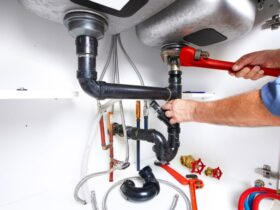Nowadays, commercial enterprises and structures may be found practically all over the bustling city streets, metropolitan regions of the country, and almost anywhere in the globe. To sustain and promote the growth of these organizations, exceptional management abilities are required. However, if sufficient time and support are not provided to the safety and outdoor wild fire home protection ca or protection of the building or offices against fire, all of the concepts, commodities, resources, and so on may be gone in only a few minutes. Providing fire risk assessment training to your personnel might be the solution to such a serious problem.
The first and most important step is to carry out a fire risk assessment. When a fire tragedy strikes, it is critical to determine the state of the commercial establishment. You may have fantastic processes in place to protect the public’s safety and the facilities, such as completely operational fire system measures, but possessing such a risk assessment will assist to verify every one of these tools.
Carrying out a fire risk assessment necessitates the ability to identify possible and real fire hazardous situations, as well as the influence of such fire risks on the people in the facilities.
Therefore, as a responsible individual, what should you do? First and foremost, you must
carry out a fire risk assessment. A Fire Risk Assessment has five steps.
What are the dangers? Is there anything on your property that may spark a fire? Do you have something that can burn? Do any of your employees smoke?
Who is in jeopardy? To some extent, everyone is definitely at risk, but is there someone in particular danger? They might be new employees, handicapped personnel, or someone who works close to a hazard.
Assess the hazards and decide on safety measures: So, what did you discover after completing steps 1 and 2? Are there other specific dangers that you’ve explored? Do you keep solvents adjacent to a paper store? At this stage, you should determine how you would manage the risk. It might be a procedural change. This stage is focused on minimizing hazards as much as feasible. How do you handle them if it isn’t?
Document and enact your findings: The next phase is to demonstrate that a proper check was performed, that you considered all potential hazards and who would be directly affected by companions, that you took reasonable preventive measures to reduce any risks, and that you included everyone who might be affected in the procedure.
Evaluate your Fire Risk Assessment: Finally, you should review your Risk Assessment frequently. This must be done in reaction to any changes in your company. Have you hired any new employees? Significantly more work?
Your place to start is the risk assessment. It informs you of the threats and assists you in deciding how to deal with them. From there, you must create a regime that greatly decreases the dangers you face and, in the worst-case situation of a fire breaking out,
provides you with the tools and plan to ensure the safety of all of your employees and customers. How frequently do you arrange drills, and what training have you provided your personnel for them to complete their tasks?











